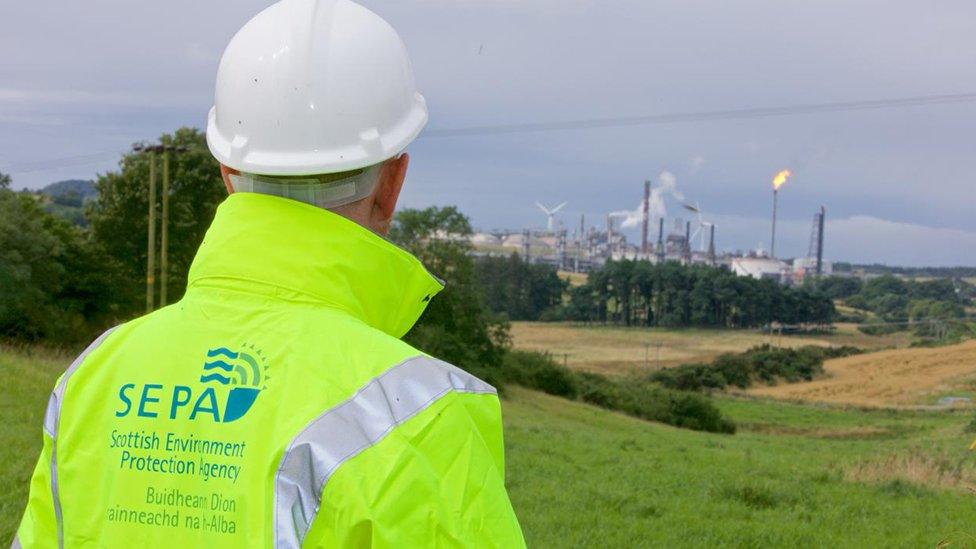Mossmorran firm fined £176,000 over flaring at chemical plant
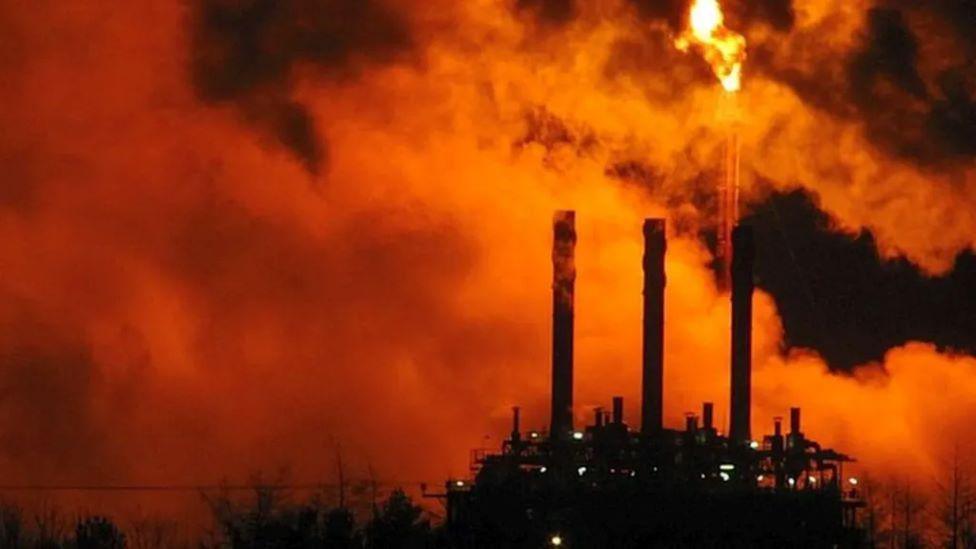
ExxonMobil said there was no actual danger but it identified failings and has made improvements since
- Published
Petrochemical company ExxonMobil has been fined £176,000 after pleading guilty to flaring emission breaches at the Mossmorran chemical plant in Fife.
Scotland's environmental watchdog Sepa received hundreds of complaints in April 2019 when flaring created excessive noise - described as sounding like a jet engine - for almost a week.
Sheriff James Williamson, at Kirkcaldy Sheriff Court, said it caused considerable anxiety to the community.
ExxonMobil has said there was no actual danger but it identified failings and has made improvements since, in both the elevated and ground flares.
ExxonMobil Chemical Ltd pleaded guilty to breaching pollution control regulations at the Cowdenbeath plant on various occasions between 7 April and 26 April 2019.
The breaches happened when the company was required to carry out continuous flaring for five days following an unexpected shutdown at the plant due to a loss of steam.
Investigation findings
The Scottish Environmental and Protection Agency (Sepa) received more than 900 complaints in relation to dark smoke and noise from the plant's flare. Some of those complaining lived five-and-a-half miles away in Kirkcaldy.
Some local residents feared a major explosion was imminent. Others complained of the incident disturbing their sleep and causing their houses to shake.
Sepa's investigation found:
Smoke from the elevated flare stack exceeded legal limits, with emissions darker than Ringlemann Shade 2 for 110 minutes - more than seven times the 15 minutes permitted. The Ringlemann scale is the standardised method for measuring the opacity of smoke
Significant noise pollution was caused, based on monitoring in the community and statements from residents
ExxonMobil had processes and contingency plans that should have prevented the incident, but they were not followed to a high enough standard
Poor maintenance scheduling, a lack of understanding of the site's steam balance, and failure to update risk analyses left the plant vulnerable, resulting in the shutdown and prolonged flaring
Community pressure
Linda Holt, a Mossmorran Action Group spokeswoman, criticised the fine as being too lenient.
"The £176,000 fine is a drop in the ocean for a multinational like ExxonMobil," she said.
"This is the same company that had to spend more than £140m on emergency upgrades to try to reduce the impacts of its own failing equipment.
"That investment alone shows how serious the underlying issues were and how long the community had been forced to endure them."
She said the regulatory and legal framework was "far too weak and far too slow".
"It took years for enforcement to catch up with a week-long flaring event that caused extreme noise and light pollution, sleepless nights, and genuine fear among residents who live beside the plant."
She said any penalties should not "disappear" into Scottish government budgets that have "repeatedly ignored the fence-line communities" saying instead the money should be given to the local people affected by the light and noise pollution from the flaring.
Ms Holt added: "The money should be directed to the people who have had their homes shaken, their health and wellbeing affected, and their trust eroded by decades of flaring."
She said although they recognised the work Sepa had done it was the community who had pushed the problem into the spotlight.
"Without community pressure, there would be no improvements and no consequences."
A Scottish government spokesperson said: "In common with the general approach to the collection of financial penalties imposed by Scottish courts, the fine will go into the Scottish Consolidated Fund for use within the overall Scottish administration."
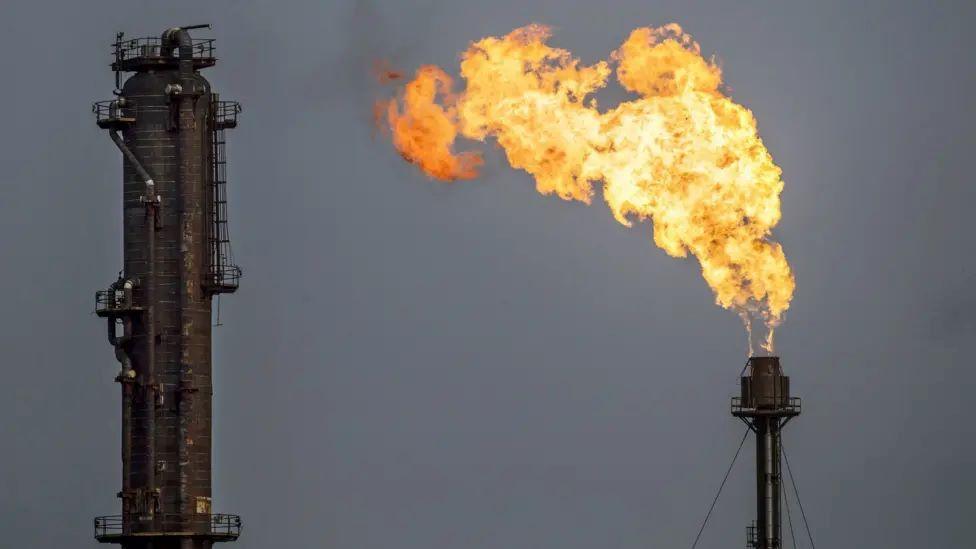
Chemical flaring is used to relieve pressure
What is chemical flaring?
Chemical flaring is used to relieve pressure without simply pumping potentially dangerous chemicals into the environment.
It generally happens when a problem has arisen and gas which cannot be processed properly is burned.
Flaring can represent a large loss of otherwise valuable products and energy capacity.
The process is regarded by industry experts as an important safety mechanism and is permitted through certain conditions.
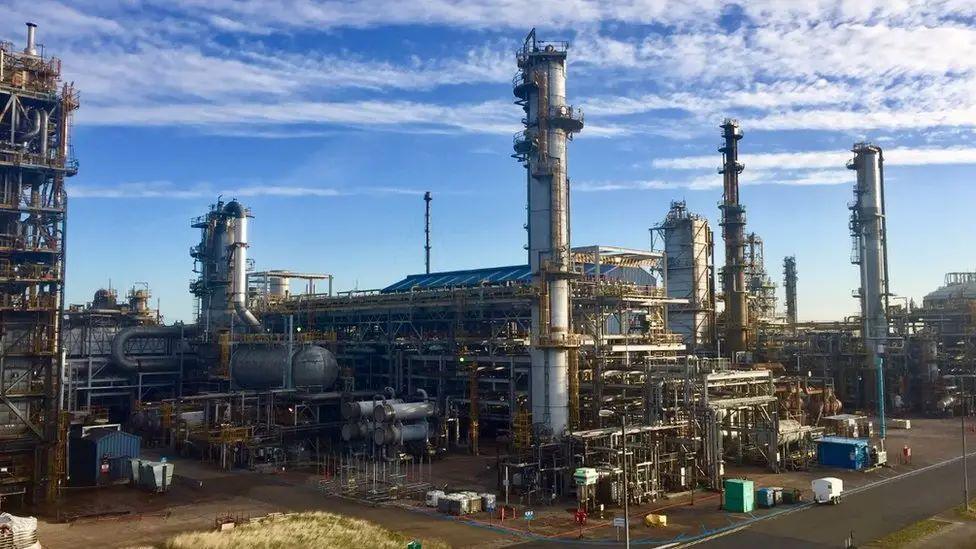
Exxonmobil said it had invested over £250m to improve operational reliability and reduce the potential for flaring
An Exxonmobil spokesperson said: ''We regret and apologise to local communities for the impact of the flaring event in 2019.
''The flare system is our site's ultimate safety mechanism, and its use was vital to safely manage an unplanned unit shutdown.
''We recognise that community trust is earned and have invested over £250m to improve operational reliability and reduce the potential for flaring, including an enclosed ground flare, which has demonstrated in operation to be smokeless with no detectable noise or vibration.
''Combined, these have helped to reduce elevated flaring by over 99% compared to 2019.''
Ross Haggart, Sepa's chief operating officer for regulation, business and environment, said the community was "impacted by unacceptable and preventable flaring".
"The scale of complaints, the highest number ever received by Sepa for a single environmental event, illustrates how many people were impacted by the noise, described as "like a jet-engine", that disturbed sleep and caused fear and anxiety.
"Our investigation found ExxonMobil had processes in place that could have prevented this incident, but they were not followed to a high enough standard.
"While flaring is an important safety mechanism at facilities like this, it must be the exception rather than routine."
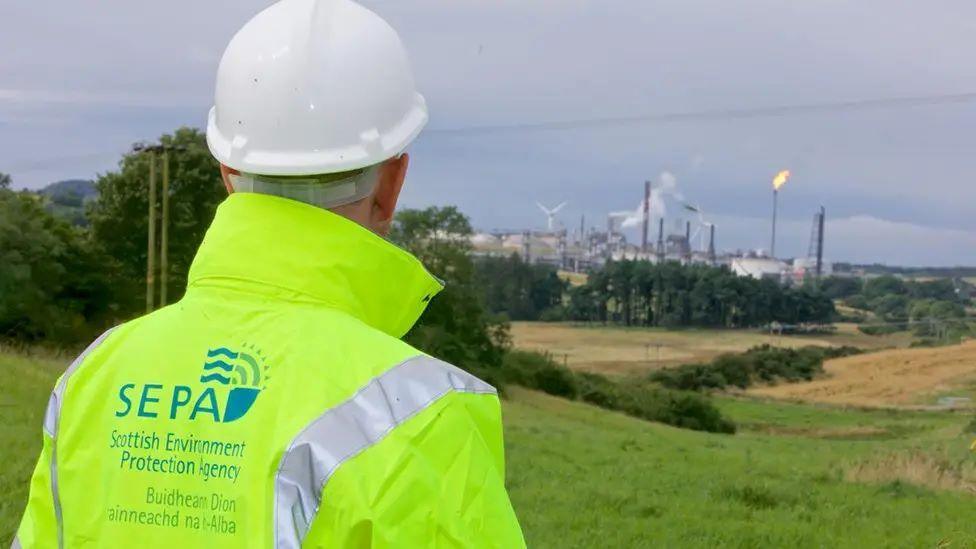
Sepa said the community was "impacted by unacceptable and preventable flaring"
Iain Batho, who leads on environmental matters for the Crown Office and Procurator Fiscal Service, said it was a complex case.
"The impact of the unplanned flaring from Mossmorran in April 2019 was both preventable and unacceptable and it caused substantial stress and anxiety to people living within several miles of the plant," he said.
"The conviction in this case highlights that large global companies will ultimately be held to account for breaches of environmental legislation in Scotland and recognises the significant impact that this incident had on local communities."
The Mossmorran site near Cowdenbeath in Fife, is made up of two separately regulated industrial sites.
These legal proceedings relate solely to ExxonMobil Chemical Limited and the flaring event that occurred in April 2019.
ExxonMobil Chemical Limited Fife Ethylene Plant – produces ethylene from ethane through a process known as "thermal or steam cracking".
Shell UK Limited Fife Natural Gas Liquids – processes natural gas liquids, including ethane which is sent to ExxonMobil.
While the two plants are physically adjacent and closely integrated in process terms, they are operated independently and regulated separately.
Each operator holds its own environmental permit under the Pollution Prevention and Control (Scotland) Regulations 2012, regulated by Sepa.
- Published7 April 2021
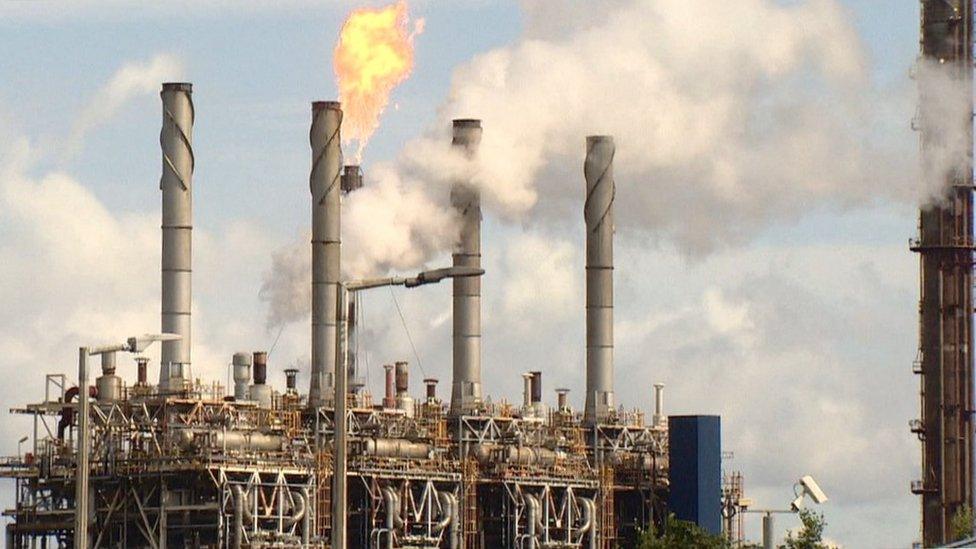
- Published17 September 2019

- Published30 August 2019
